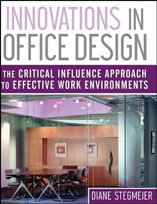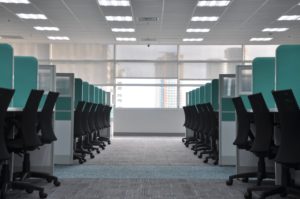Critical Influence™: Organizational Image
What is organizational image and why should it matter to your company?
An organization’s image is how everyone—including the business owners, decision makers, employees, customers, and the public—perceives a company. Having that in mind, it is important to note that the executives’ perception of the company’s image does not necessarily mirror that of the employees or the general public.
For instance, executives tend to look at the grander picture of things and may honestly feel that they are implementing progressive business strategies. They might think that employees are given enough empowerment to proactively make decisions on issues that they encounter on a daily basis.
But this may not ring true with the employees who feel that they don’t have any autonomy and authority to make things happen, that they should only take orders from higher-ups. As a result, even minor decisions are endorsed to the upper management for approval.
A likely effect of this scenario would be a decrease in employee morale. It may be perceived that the company shows lack of confidence in the staff and exhibits a backward approach as opposed to the progressive image that management is trying to establish.
The candid image of an organization does not stop at the impression of the individuals working within it. Of course, the general public is there to consider. Outside influences may make or break the company’s reputation in the eyes of the ordinary crowd.
Take for example, a company that becomes the subject of every news headline because of a lawsuit filed against it. The negative impression it brings may last longer than the actual court hearing, thereby damaging the company’s reputation.
Together, these elements add up to the many facets of organizational image. Since these influences are subject to change, no organizational image is fixed. This is why significant steps are taken by organizations to maintain a desired reputation. One of the most important aspects to consider is how a company is presented to stakeholders, particularly in the aspect of the physical workplace.

As part of the 15 Critical Influences™, this page on Organizational Image is integrated with actual content from the book Innovations in Office Design: The Critical Influence Approach to Effective Work Environments™ by SCG Founder Diane Stegmeier.
Image as the focus of a new workplace strategy
 Think about your organization as a whole. What picture immediately comes to mind? Do you see an open space pulsing with creativity and collaboration or several divided spaces where you can hear hushed voices here and there?
Think about your organization as a whole. What picture immediately comes to mind? Do you see an open space pulsing with creativity and collaboration or several divided spaces where you can hear hushed voices here and there?
It may seem trivial but the appearance and the utilization of a physical workplace has a significant contribution to the image of an organization. For example, when used properly, a modern, collaborative work environment creates a positive image in the eyes of customers and serves as an important tool for attracting and retaining talent.
Conversely, outdated office designs and layouts send a message that the company is archaic and uninspiring. Potential customers or prospective employees visiting your workplace might have second thoughts about engaging with your company upon seeing the quality of your facility.
Executive leaders may actively shape the organization’s image to achieve certain business goals. As a matter of fact, participants in a research initiated in 1996 by Stegmeier Consulting Group stated that one of their concerns for innovation was to attract investors and employees via the company’s image.
This behavior can also be seen in organizations of today that continually seek to be named as Great Places To Work. With the belief that it can positively impact their financial performance, they exert efforts in improving their workplace environments to achieve an enhanced image.
The image of an organization may well be the primary area of focus for a new workplace strategy. A company may have an urgent need to hire new talent and its image can be used as a human resources strategy.
If it brands itself as “forward thinking,” “progressive,” or “entrepreneurial,” the physical environment should reflect this quality. If a company wants to attract additional stockholders, or secure customers in a newly targeted market, a new workplace plan involving a few changes to the office interior may be developed to achieve this.
This is where the interrelatedness of the image and the physical workplace Critical Influences™ comes into play and it will be explored further in the next point.
The importance of creating a sustainable organizational image through the physical workplace
As what has been established so far, the image that an organization creates for itself should match its actions and what people can see when they visit the physical workplace.
To further illustrate this, consider a firm whose college recruitment brochure boasts of a high-energy, open, and collaborative workplace. The ideal physical space solution shown in the picture would naturally look exciting and enticing to young prospects who are looking for the exact work environment presented in the brochure.
 However, upon visiting this seemingly promising workplace for a job interview, applicants see a sad underutilization of spaces designed to encourage team interaction.
However, upon visiting this seemingly promising workplace for a job interview, applicants see a sad underutilization of spaces designed to encourage team interaction.
The cafe that was seen to be equipped not only with food and beverages but also with whiteboards and work tools in the brochure turns out to be a space void of any activity. The team spaces that are supposed to be filled with employees sharing ideas look like sad, empty areas.
This will definitely take out any enthusiasm the interviewees may have upon entering the workplace. This shows the importance of creating a sustainable image that lessens the possibility of a “subimage” being unintentionally carved into the stakeholders’ minds.
How companies can ensure that their image is reflected in a new office environment
Keeping the previous point in mind, how can companies ensure that their image is ‘lived out’ in their space?
The goal of many office transformations is to create a design that is capable of supporting the company’s established image. However, building out a great space that is aligned with the organizational image does not guarantee that employees will use spaces as intended. The office design may match the image, but the reality related to its utilization may paint a different picture.
As in the example above, providing spaces designed for collaboration did not yield the desired energy from the workforce. Designing a workplace is not as simple as “build it and they will come.”
When companies plan to build out a new office environment, it must be supported with a robust approach to change management. This involves a series of comprehensive activities carried out to successfully drive change in the workplace.
An education campaign that aims to articulate the rationale for the workplace change can aid employees in understanding why change is happening and how important their engagement is in the process.
Creating leader talking points and communication content & materials empowers key leaders and managers to spread the word about change and strengthen employee engagement. Furthermore, interactive training sessions on how to use the new space and technology helps employees prepare for new ways of working.
These activities should all tie back to the company’s image and core values to ensure that the change management process is aligned with the company’s corporate goals and founding values.
On a related note, a space that has already been built out, but is not being used as intended is not a lost cause. Stegmeier Consulting Group has helped many companies where things were not going as planned after their move to a new space.
Our approach starts with investigating the root cause of the problem. Assessing the situation can be done through conducting post-occupancy surveys. Interviewing key stakeholders and conducting focus groups allow us to understand employee pain points and challenges. These insights are then taken into account when presenting recommendations.
Many times, the issue surrounding change is behavioral. To help fix this, SCG leads employee engagement groups in developing workplace protocols & etiquette to set standards for appropriate employee behavior in a new office environment. In addition to this, the workforce is educated by reintroducing them to the purpose of the change and leading them through the steps mentioned previously.
Our expertise in bridging the gap between people and place can help companies who are struggling to reflect their desired image through their physical workplace. The focus should not be on the office design alone. Employee engagement must be strengthened during the change process to ultimately enable the workforce to live out the company’s image in a new work environment.
Change management consulting to help you reflect a sustainable image
Are you managing a workplace change initiative to make a name for your organization? Maybe you just want to improve your existing image to stakeholders? Either way, Stegmeier Consulting Group can help you evaluate company endeavors to successfully reflect a sustainable image.
Using the Critical Influences™ approach, SCG can identify ways to leverage factors and identify barriers that may prevent your organization from projecting your desired image to both internal and external stakeholders.
The first step is easy! Fill out the form below to discuss your goals with us.



